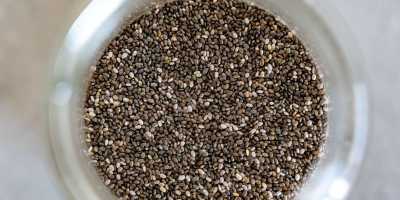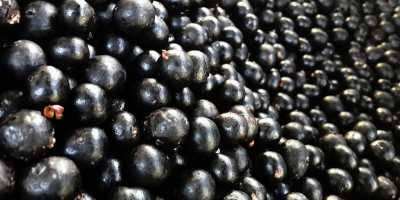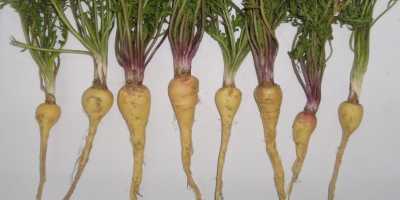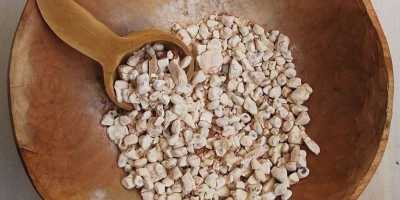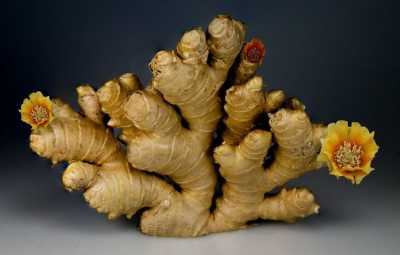 Photo by Emma-Jane Hobden / Unsplash
Photo by Emma-Jane Hobden / Unsplash
Top 10 superfoods to boost health
Eating a balanced diet is essential for good health, but incorporating nutrient-dense foods into your meals can take your health to the next level. The following superfoods have been chosen for their exceptional nutritional profiles and health-promoting benefits. From protein-packed quinoa to antioxidant-rich goji berries, each of these foods can boost your overall well-being and help you feel your best. By adding these superfoods to your diet, you can take a proactive approach to your health and achieve optimal vitality and wellness.
Table of contents
-
Quinoa
What is Quinoa?
Quinoa is a grain crop that originated in the Andean region of South America and has been cultivated for thousands of years. It is a pseudo-cereal, which means it is not a grass like wheat or rice, but rather a seed. Quinoa has become increasingly popular in recent years due to its high nutritional value and versatility in cooking.
In addition to its nutritional value, quinoa is also considered an environmentally-friendly crop. It requires less water than many other grains and can grow in a variety of conditions, making it a sustainable option for farmers. Additionally, because quinoa is often grown organically and without the use of pesticides or fertilizers, it is considered a healthy and eco-conscious choice for consumers.
Benefits of Quinoa
-
High in protein: Quinoa is one of the few plant-based foods that is a complete protein, meaning it contains all nine essential amino acids that our bodies cannot produce on their own.
-
Gluten-free: Quinoa is naturally gluten-free, making it a good option for people with celiac disease or gluten intolerance.
-
Low glycemic index: Quinoa has a low glycemic index, which means that it doesn't cause a rapid spike in blood sugar levels. This makes it a good option for people with diabetes or anyone who wants to maintain stable blood sugar levels.
-
Rich in antioxidants: Quinoa contains high levels of antioxidants, which help to protect the body from damage caused by free radicals. Some studies have shown that the antioxidants in quinoa may help to reduce the risk of chronic diseases such as heart disease and cancer.
Curiosities of Quinoa
-
Sacred crop: Quinoa was considered a sacred crop by the Incas, who referred to it as the "mother of all grains."
- Colorful varieties: While quinoa is commonly seen as a beige or white seed, there are actually over 120 varieties of quinoa, ranging in color from pink to black.
-
Although quinoa is often referred to as a "pseudocereal," it is not technically a cereal grain like wheat or rice. It is a member of the Amaranthaceae family, which includes other edible plants such as spinach and beetroot.
-
-
Chia
What is Chia?
Chia is a tiny black or white seed that comes from the Salvia hispanica plant, which is native to Mexico and Guatemala. It has been used as a food source for thousands of years and is known for its numerous health benefits.
Chia seeds have gained popularity in recent years as a superfood due to their high levels of nutrients such as fiber, protein, omega-3 fatty acids, and antioxidants. They are also low in calories and can be easily incorporated into a variety of dishes, making them a popular addition to smoothies, baked goods, and even salads. Furthermore, chia seeds are gluten-free and can be a great option for people with celiac disease or gluten sensitivity.
Benefits of Chia
- High in fiber
- Rich in omega-3 fatty acids
- Good source of protein
- May help improve blood sugar control
- May help lower blood pressure and cholesterol
Curiosities of Chia
-
Chia seeds were so valued by the ancient Aztecs and Mayans that they were used as currency.
-
Chia seeds can absorb up to 12 times their weight in water, making them a popular ingredient in puddings and smoothies.
-
Chia seeds were consumed by Aztec warriors to provide them with energy and endurance. "Chia" is a term from the Mayan language that translates to "strength."
-
Acai
What is Acai?
Acai is a small, purple berry that grows on the acai palm tree in Central and South America. It has become popular as a health food in recent years due to its high levels of antioxidants.
Acai is also a good source of fiber, healthy fats, and other nutrients. It is commonly consumed in smoothie bowls, juices, and supplements. While acai is native to Brazil, it has gained popularity around the world and is now cultivated in other countries such as Peru and Colombia. The acai palm tree is also important to the Amazon rainforest ecosystem, as it provides habitat and food for a variety of animals.
Benefits of Acai
- High in antioxidants
- May help improve cholesterol levels
- May have anti-cancer properties
- May help improve brain function
- May help improve skin health
Curiosities of Acai
-
The acai berry is often described as having a chocolatey taste with a hint of berry flavor.
-
Acai berries have a short shelf life and must be processed quickly after harvesting, which makes them difficult to export.
-
The acai tree is native to Central and South America and can grow up to 25 meters (82 feet) tall.
-
Maca
What is Maca?
Maca is a root vegetable that grows in the high Andes mountains of Peru. It has been used for thousands of years as a food source and for its medicinal properties.
Maca is known for its adaptogenic properties, which means it helps the body adapt to stress and maintain a healthy balance. It is also rich in vitamins, minerals, and protein, making it a nutritious addition to one's diet. In recent years, maca has gained popularity as a superfood and is commonly consumed as a powder or supplement.
Benefits of Maca
- May help improve energy and endurance
- May help improve mood and reduce symptoms of depression
- May help improve sexual function and fertility
- May help reduce symptoms of menopause
- May help improve bone health
Curiosities of Maca
-
Maca is sometimes referred to as "Peruvian ginseng" due to its traditional use as an adaptogen to help the body cope with stress.
-
Traditionally, maca was believed to enhance fertility and improve sexual function in men and women. While some studies have found positive effects on sexual function, more research is needed to confirm these claims.
- Maca is one of the few edible plants that can survive the harsh weather conditions above 4,000 meters in the Peruvian Andes
-
Baobab
What is Baobab?
Baobab is a fruit that comes from the baobab tree, which is native to Africa. It has a tangy, citrusy flavor and is known for its high levels of vitamin C.
Baobab fruit is also rich in fiber, antioxidants, and several other important nutrients. The fruit is traditionally used in African cuisines, and has been found to have various health benefits such as reducing inflammation and improving digestive health. In recent years, baobab fruit has gained popularity as a superfood and is now available in various forms, including powders, capsules, and energy bars.
Benefits of Baobab
- High in vitamin C
- High in fiber
- May help improve digestive health
- May help improve blood sugar control
- May have anti-inflammatory properties
Curiosities of Baobab
-
Baobab trees are often called "upside-down trees" because their branches resemble roots sticking up into the air.
-
Baobab trees can live for thousands of years, with some individuals estimated to be over 2,000 years old.
-
Some baobab trees are so large that they can store up to 120,000 liters of water in their trunks to survive long periods of drought.
-
Spirulina
What is Spirulina?
Spirulina is a blue-green algae that grows in both salt and fresh water. It is often used as a dietary supplement due to its high levels of nutrients.
Spirulina has been cultivated and consumed by humans for centuries and was a food source for the Aztecs in Mexico. It is known for its high protein content and is considered a complete protein source as it contains all nine essential amino acids. Additionally, it is a rich source of antioxidants, vitamins, and minerals. Its popularity as a dietary supplement has increased in recent years due to its potential health benefits, including lowering cholesterol, reducing blood pressure, and improving gut health.
 Photo by Supplements On Demand
Photo by Supplements On DemandBenefits of Spirulina
- High in protein
- High in antioxidants
- May help reduce blood pressure
- May help improve cholesterol levels
- May help improve muscle strength and endurance
Curiosities of Spirulina
-
After it was successfully used by NASA as a dietary supplement for astronauts on space missions, Spirulina or Arthrospira, a blue-green algae, became famous.
-
Spirulina algae was originally cultivated mainly by the Aztecs near Lake Texcoco, where it was also consumed by pregnant women.
-
Spirulina is a photosynthetic microalgae that produces oxygen as a byproduct during photosynthesis.
-
Turmeric
What is Turmeric?
Turmeric is a spice that comes from the turmeric plant, which is native to Southeast Asia. It is commonly used in cooking and has been used for centuries in traditional medicine for its anti-inflammatory and antioxidant properties.
Turmeric is a rhizomatous herbaceous perennial plant of the ginger family. It has a unique taste, earthy aroma, and a distinctive bright yellow-orange color. In addition to its culinary uses, turmeric has been studied extensively for its potential health benefits, including reducing inflammation, promoting heart health, and improving brain function. It contains a compound called curcumin, which is responsible for many of its health benefits.
 Photo by Tina Witherspoon / Unsplash
Photo by Tina Witherspoon / Unsplash Benefits of Turmeric
- May have anti-inflammatory properties
- May help improve brain function
- May help reduce the risk of heart disease
- May have anti-cancer properties
- May help improve symptoms of arthritis
Curiosities of Turmeric
-
Turmeric is the spice that gives curry its yellow color.
-
The turmeric plant belongs to the ginger family and is related to other plants such as cardamom and galangal.
-
Consuming turmeric with black pepper enhances the absorption of curcumin by 2,000%.
-
Ginger
What is Ginger?
Ginger is a root that is commonly used as a spice and herbal remedy. It has a long history of use in traditional medicine and is known for its anti-inflammatory and digestive properties.
In addition to its culinary uses, ginger has been used for its medicinal properties for centuries. It is commonly used to alleviate nausea, including morning sickness in pregnant women. Ginger has also been shown to have anti-inflammatory properties, making it a potential treatment for conditions such as osteoarthritis and asthma. Additionally, it may help lower blood sugar levels and reduce the risk of heart disease.
 Photo by Joris Neyt
Photo by Joris Neyt Benefits of Ginger
- May help reduce inflammation and pain
- May help improve digestion and reduce nausea
- May help lower blood sugar levels
- May have anti-cancer properties
- May help improve brain function
Curiosities of Ginger
-
Ginger is technically a rhizome, which is an underground stem, rather than a root.
-
The height of a ginger plant can reach up to 4 feet (1.2 meters)
-
The generic name for this spice is "Zingiber," which originates from the Greek word "zingiberis." The Greek word is derived from the Sanskrit name for the spice, "singabera."
-
Camu Camu
What is Camu Camu?
Camu Camu is a fruit that grows in the Amazon rainforest of Peru and Brazil. It is known for its high levels of vitamin C and antioxidant properties.
Camu Camu is a small, reddish-purple fruit that is approximately the size of a cherry. It has a sour taste and is often used to make juices, jams, and other food products. In addition to its high vitamin C content, it is also rich in other antioxidants, such as flavonoids and ellagic acid, which are believed to have numerous health benefits. Camu Camu has been used by indigenous communities in the Amazon for centuries for its medicinal properties and is now gaining popularity as a superfood.
Benefits of Camu Camu
- High in vitamin C
- May help improve immune function
- May help reduce inflammation
- May help improve skin health
- May help reduce the risk of chronic diseases
Curiosities of Camu Camu
-
Camu Camu is high in vitamin C, with some sources stating that it has up to 60 times more vitamin C than an orange.
-
The Camu Camu fruit has been traditionally used by indigenous people in the Amazon region for its medicinal properties, such as treating infections, reducing inflammation, and boosting energy levels.
-
The fruit has a very sour taste and is often used to flavor beverages, desserts, and other foods.
-
Goji Berries
What is Gogi Berries?
Goji berries are a bright orange-red fruit that grows on a shrub native to China. They have been used in traditional Chinese medicine for thousands of years and are known for their high levels of antioxidants and nutrients.
In recent years, goji berries have gained popularity as a superfood and have been used in a variety of food products such as teas, juices, and snacks. They are also available in dried form and can be added to oatmeal, smoothies, and other dishes for a boost of nutrition. Additionally, some studies have suggested that goji berries may have potential health benefits such as improving eye health and boosting the immune system.
 Photo by Valeria Boltneva
Photo by Valeria BoltnevaBenefits of Goji Berries
- High in antioxidants
- May help improve immune function
- May help improve skin health
- May help improve eye health
- May help reduce the risk of chronic diseases
Curiosities of Goji Berries
-
Goji berries are also known as wolfberries and belong to the Solanaceae family, which includes other plants such as tomatoes, potatoes, and peppers.
-
The shrub on which Goji berries grow is called Lycium barbarum and is native to China, where it has been grown and used for its medicinal properties for thousands of years.
-
Goji berries have a slightly sweet and sour taste and are often consumed as a dried fruit or in juice form.
In conclusion, incorporating superfoods into your diet can have a significant impact on your overall health and well-being. The top 10 superfoods mentioned in this article - quinoa, chia, açaí, maca, baobab, spirulina, turmeric, ginger, camu camu, and goji berries - are all rich in various vitamins, minerals, and nutrients that are essential for a healthy lifestyle.
For example, quinoa is high in protein, fiber, and several B vitamins, while spirulina is packed with antioxidants, iron, and vitamin B12. By consuming these superfoods regularly, you can ensure that your body is receiving the necessary vitamins and nutrients to function at its best.
So why not start adding some of these superfoods to your meals today and enjoy the benefits of a healthier and more energized life?

